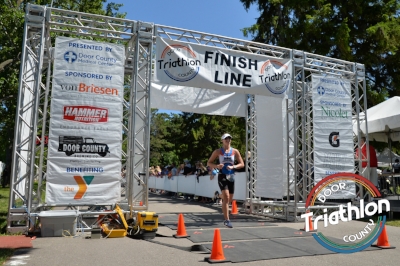How I’m Tackling This Off Season
This off season will be different than others because I am going to do everything different. That’s right, I am going to throw out the old play book and work on all of my weaknesses this off season. The thought of this scares me but also motivates me. After competing in triathlon for 11 years, I need a new physical and mental stimulus in order for me to have a great 2018 season. However, this means I have to look at myself critically and determine what my weakness are which isn't easy!
- Work on my physical strength: I have seen my strength levels decline every year and have seen it effect me in training. I was once a strong climbers and am now getting beat on almost every climb when training with others. Since October I have been in the gym, lifting weights working on developing my muscular strength. The past 2 months have been focused on general lifting at a moderate intensity. I am now getting into lifting at full capacity. This means I am only doing 3-4 rounds of 3-5 repetitions where I am forced to rest 3 minutes before i can start again. This is where the gains will be made to making me overall stronger.
- Work on my explosive power: This compliments my lifting in the gym, but puts a different spin on it. I haven’t improved my 5k running time, 400 yard swim, of my biking threshold is over 4 years. If your critical speed isn't improving, you won’t get faster over longer events. It’s not as if i haven't tried to improve the above, for whatever reason I haven't worked on the supporting elements that will improve my “thresholds”. So far I have been doing plyometrics and up hill bounding, lifting heavier weights in the gym, doing a tremendous amount of sprinting in the pool w/ parachutes and ankle bands, and short intense sessions on the bike. These sessions are very hard. At first I hated them because my session volumes have reduced almost 50% but i am seeing the benefits already. My personal best in a 50 free was 34 and I am now at 30 seconds! You can’t change technical inefficiencies under a high training load, so if you are swimming 4,000 yards with a bad swim stroke, you will remain a bad swimmer.
- Reduce my body fat: I didn’t say I wanted to lose weight, i said body fat percentage. I have noticed that as i’ve gotten older, my body fat has increased. With the added weights and explosive work, that will naturally add more muscle which will keep my weight the same and there is a good chance I will start to lose weight as well. Either way, when I went to CXC Skiing facility to get my Resting Metabolic Rate tested to determined how many calories my body demands each day, I also had my body fat tested… i wasn't happy with it. Having these numbers, i am able to set up my daily eating to know how much i should be eating to either lose weight or maintain my current weight.
- Race more frequent: I used to only race when I felt prepared and I feel like this is a weakness that always gets exploited on race day. I feel like I hide in my training until I feel race ready and then when i did race I had too many expectations to do well. This is a good thing and a bad thing because you should always have expectations, but I also feel like my performances suffered because I was afraid to fully commit myself in races, almost like i was racing at 90% of my best instead of 100%. So far i have raced twice this off season and before both I almost convinced myself to not race but glad i did. Its a hard thing to put yourself in a situation when you know you wont be at your best, it takes courage, but i am using these races as a stepping stone to manage my overall preparation. My plan this off season is to race 1-2xs a month, from the Pinnacle Indoor Triathlons to local running races, i will be out there learning to suffer!
Coach Steven Brandes









































